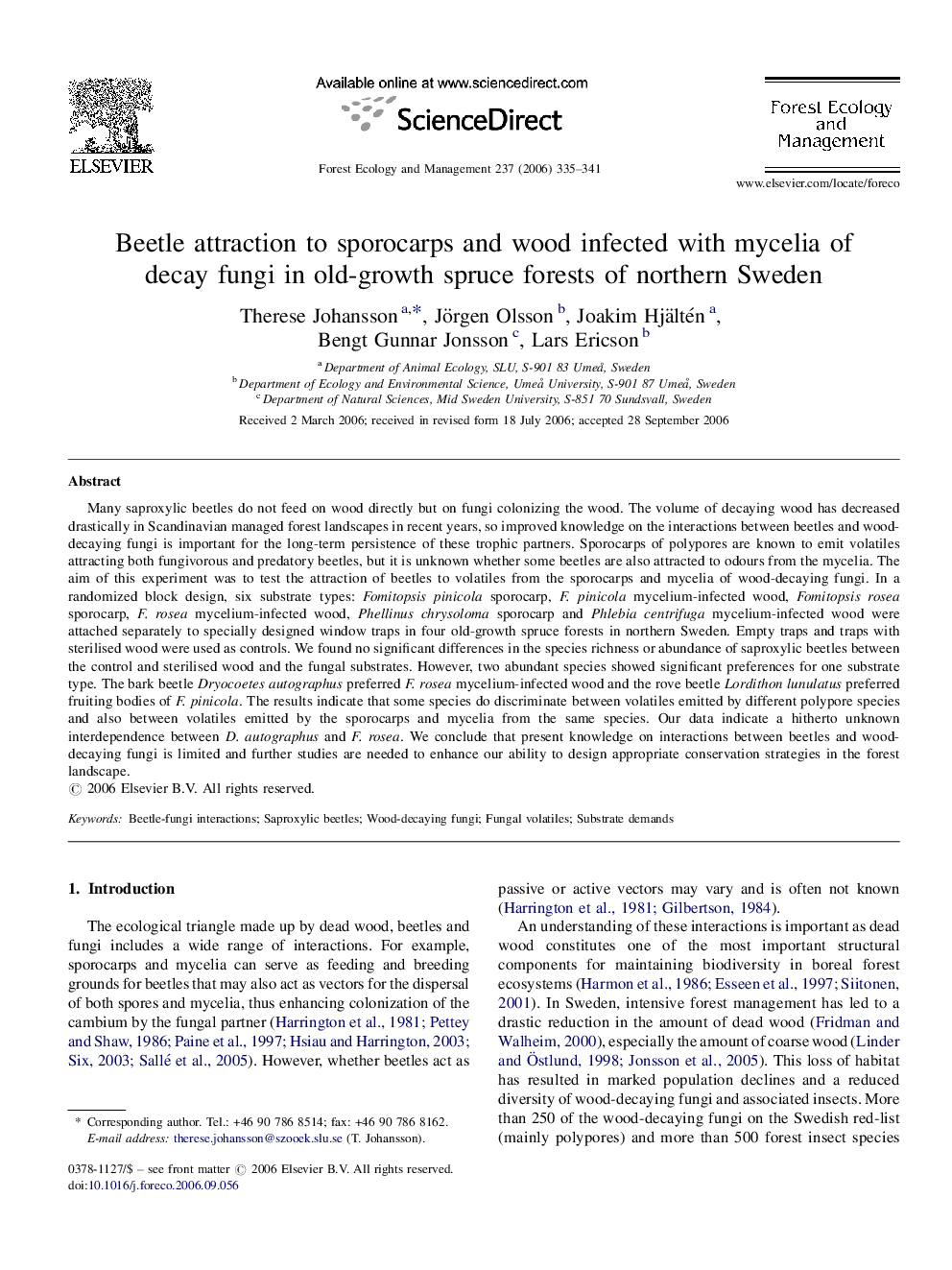| کد مقاله | کد نشریه | سال انتشار | مقاله انگلیسی | نسخه تمام متن |
|---|---|---|---|---|
| 89964 | 159360 | 2006 | 7 صفحه PDF | دانلود رایگان |

Many saproxylic beetles do not feed on wood directly but on fungi colonizing the wood. The volume of decaying wood has decreased drastically in Scandinavian managed forest landscapes in recent years, so improved knowledge on the interactions between beetles and wood-decaying fungi is important for the long-term persistence of these trophic partners. Sporocarps of polypores are known to emit volatiles attracting both fungivorous and predatory beetles, but it is unknown whether some beetles are also attracted to odours from the mycelia. The aim of this experiment was to test the attraction of beetles to volatiles from the sporocarps and mycelia of wood-decaying fungi. In a randomized block design, six substrate types: Fomitopsis pinicola sporocarp, F. pinicola mycelium-infected wood, Fomitopsis rosea sporocarp, F. rosea mycelium-infected wood, Phellinus chrysoloma sporocarp and Phlebia centrifuga mycelium-infected wood were attached separately to specially designed window traps in four old-growth spruce forests in northern Sweden. Empty traps and traps with sterilised wood were used as controls. We found no significant differences in the species richness or abundance of saproxylic beetles between the control and sterilised wood and the fungal substrates. However, two abundant species showed significant preferences for one substrate type. The bark beetle Dryocoetes autographus preferred F. rosea mycelium-infected wood and the rove beetle Lordithon lunulatus preferred fruiting bodies of F. pinicola. The results indicate that some species do discriminate between volatiles emitted by different polypore species and also between volatiles emitted by the sporocarps and mycelia from the same species. Our data indicate a hitherto unknown interdependence between D. autographus and F. rosea. We conclude that present knowledge on interactions between beetles and wood-decaying fungi is limited and further studies are needed to enhance our ability to design appropriate conservation strategies in the forest landscape.
Journal: Forest Ecology and Management - Volume 237, Issues 1–3, 15 December 2006, Pages 335–341